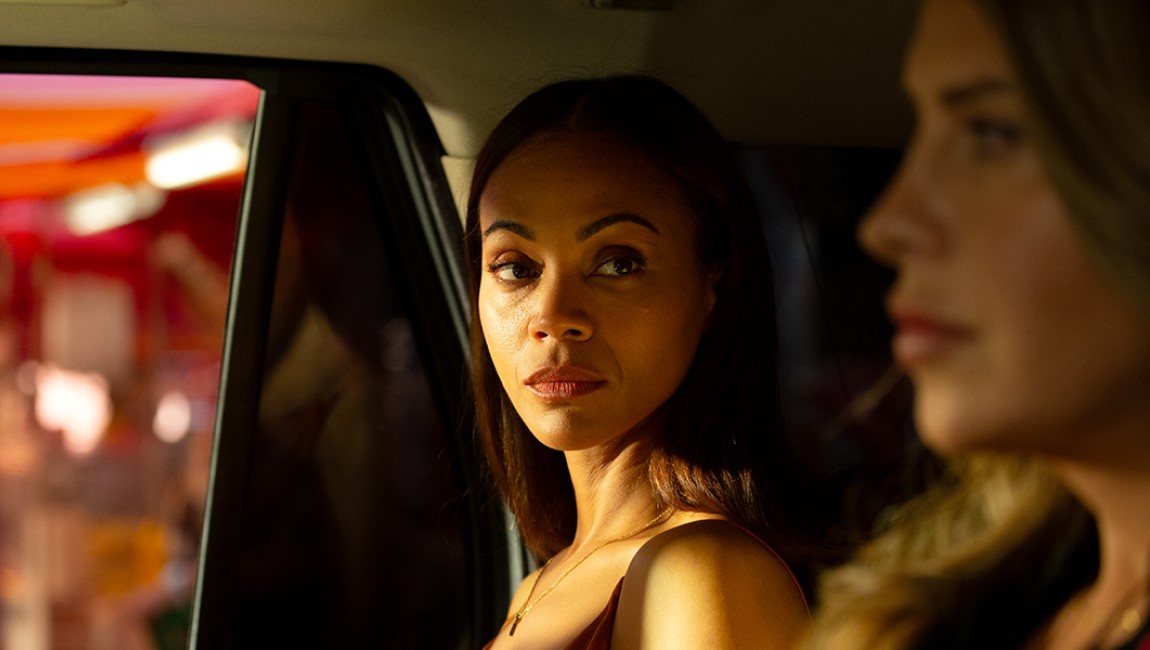Ah, the musical. A relic of the past. For a time, directors couldn’t fight the impulse to make a musical: Robert Altman, Francis Ford Coppola and John Huston all gave it a whirl. Huston made two, if you count his version of “Moulin Rouge” (1952). (And no, Altman’s “Nashville,” though perfect, is not a musical.) And while Huston’s “Annie” (1982), Altman’s “Popeye” (1980) or Coppola’s “One From The Heart” (1981) don’t figure high in the top-anything ranking of each legendary director’s best films, it bears mention considering the dearth of modern-day iterations, or cinematic risk-taking generally. Enter Jacques Audiard, a celebrated international auteur whose audacious and ambitious “Emilia Pérez,” is a giddy exercise in maximalism. Now in theaters and streaming on Netflix, “Emilia” is a brash non-conformist, and a justifiable cause for celebration, given its vibrant lead performances and stubborn refusal to hew to any bland, customarily mainstream cinematic scruples.
These days, studios and directors rarely delve into the musical genre, unless it’s a guaranteed box office smash (“Barbie”) or it’s Amazon forking over some pocket change to an arthouse rebel (Leos Carax’s “Annette”). Audiard’s finished product deserves more than just a participation trophy though, because it oozes originality and has entertainment value to burn. “Emilia” is a ‘90s pop music video in a Broadway jukebox musical wrapper, and thanks to the sturdy, giving-it-all-and-more turns from Karla Sofía Gascón and Zoe Saldana, it pays tribute to the genre without layering on the nostalgic too thick, or, at all. Unlike Hollywood musicals 1.0, which favored low-stakes, guy-gets-girl contrivances to make excuses for song and dance, “Emilia” dares to dream bigger, raising the emotional heat without sacrificing humor, joy and pain.
Audiard, Most Comfortable Outside of His Comfort Zone
Audiard, similar to Altman, Coppola and Huston—and, for that matter, Greta Gerwig and Carax—is a tricky artist to pigeonhole. A Frenchman who typically writes his own scripts, Audiard seems most comfortable outside of a comfort zone, or at least, an easily-definable set of preferences. Whether it’s a swooning romance (“Paris, 13th District), a searing drama (“Rust and Bone”) or an English-language Western (“The Sisters Brothers”), Audiard has dabbled in a smattering of tones and categories. The material considered in “Emilia Pérez” is so off-brand, on the surface, that it’s perfectly on-brand for such a curious creator, and it never hurts when the cast rises to the challenge. In addition to Gascón and Saldana, Selena Gomez and Adriana Paz round out a dynamic cast, supporting the Cannes’ jury’s unusual decision to give ‘Best Actress’ honors to all four women.
As the overworked lawyer Rita Moro Castro, Saldana is tasked with setting up the story, and naturally, she does so singing and dancing. Explaining the rut she’s in personally and professionally, Rita practically welcomes the mysterious offer that follows the flashy opening numbers, when the ominous Manitas Del Monte (Gascón), face a-tatted, calls, then kidnaps her. The biggest surprise for Rita isn’t how she gets to Manitas—in an SUV with a bag over her head—but that Manitas needs her legal expertise to complete his dream: gender-affirming surgery. For her services—which also includes convincing Manitas’ wife Jessi (Gomez) and children to move from their native Mexico to Switzerland—Rita will be paid handsomely, a sharp upgrade from all-gruntwork-no-glory backup position (and defending murders, to boot) in which she’s currently mired.
‘Emilia’ Explores New Territory

After Rita’s work is done, of course, the real job has just begun. Four years later, a refreshed and refurbished Rita sees a familiar face at a dinner party. “Is that you?” Why, yes: it’s Emilia Pérez (Gascón, again), who subtly croons a new request for her reliable hired hand. Emilia needs to see her family. So Rita convinces Jessi to move back to Mexico for safety reasons, taking up with Emilia, who’s presented as Manitas’ wealthy (how she came into the money is never explained) cousin. Gascón is astonishing in her dual roles, at once a menacing, murderous drug dealer and a radiant yet demanding matriarch. In the latter, there’re traces of Joan Crawford; the film’s mood certainly spikes to a melodramatic pitch, although it never betrays a dark, noirish underside, like Crawford’s “Mildred Pierce” (1945).
If the film’s excess is its greatest asset, it’s a modest crutch, too, providing a license to devote airtime to modest characters (surgeons, Paz’s Epifanía) and extend certain ancillary details (Emilia’s charity work) which inch—instead of launch—the film forward. Cinematographer Paul Guilhame knows when to show off and doesn’t try to reign in his restless camera, a visual instinct that pays off when the film barrels towards the finish, in a death-seeking car chase that could only end badly. Turning to a crime thriller, “Emilia” explores new territory without missing a beat. Through it all, Gascón is the heart and soul, not so much stealing the spotlight as accepting it from Saldana. She carries the weight of the choreography and singing, including a show-stopping banquet scene where she juts, twerks, and belts, conjuring Paula Abdul, Rosie Pérez (“Do The Right Thing”) and Cyd Charisse (“The Band Wagon”).
Reveling in its Own Creation
Unlike big-budget critical duds “One From the Heart” or “Popeye” – the latter, however, was profitable and the former has been reprised, and reappraised—four decades later, the initial reception for “Emilia” is roundly enthusiastic, generating ample awards buzz for the cast and creative collaborators. It’s far from a perfect script (Jessi, for example, is relatively underwritten as the mad, vengeful woman scorned) but the conceit and execution are close enough to irresistible that the flaws are forgivable, almost endearing. On the game shoulders, legs and pipes of Gascón and Saldana, “Emilia Pérez” revels in the mess of its own creation, turning an idea which seems ludicrous on paper into a fully-formed flight of uninhibited imagination, as saturated with humanity and hope as it is throbbing strobe lights and gyrating background dancers.

